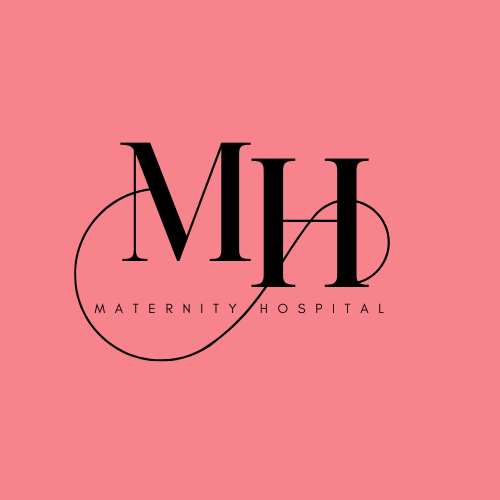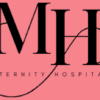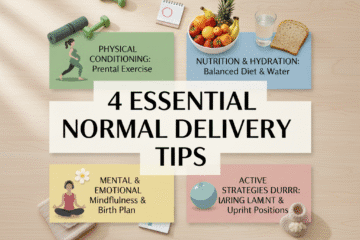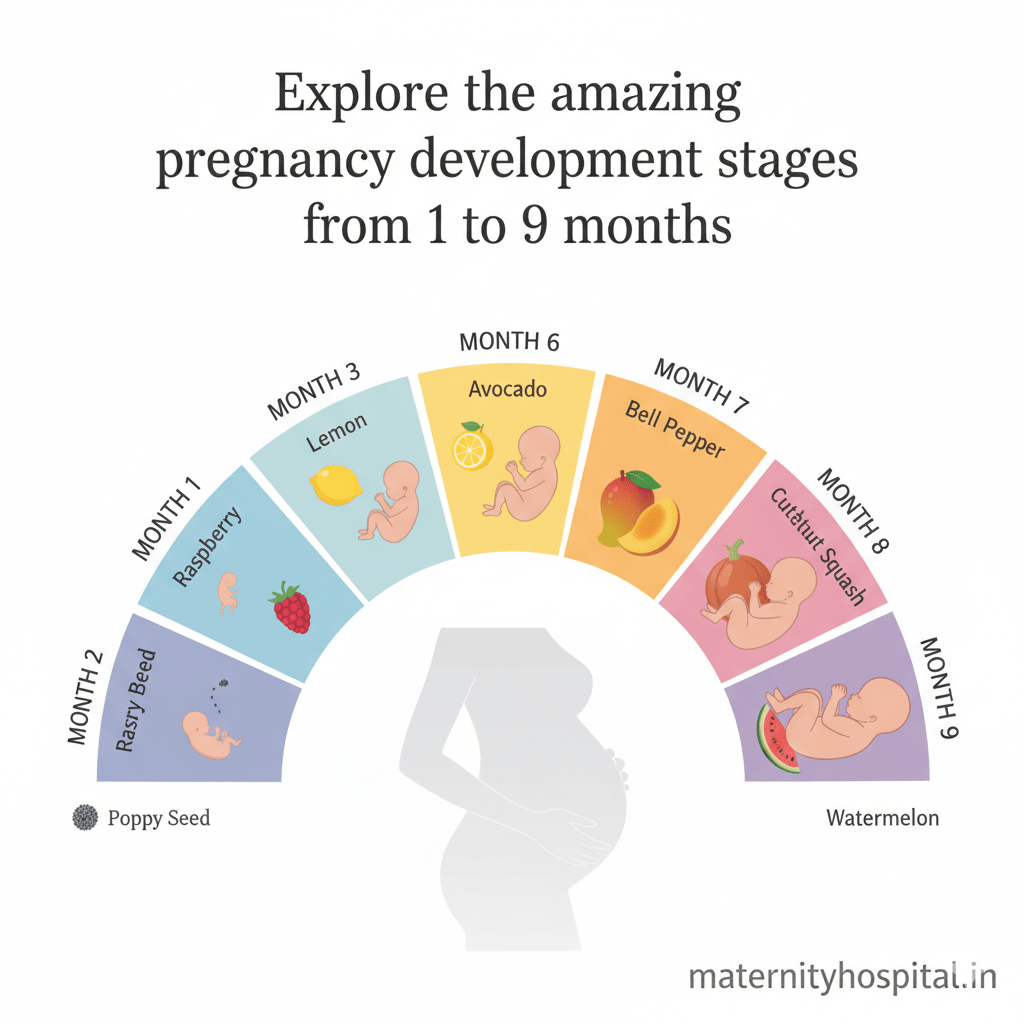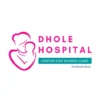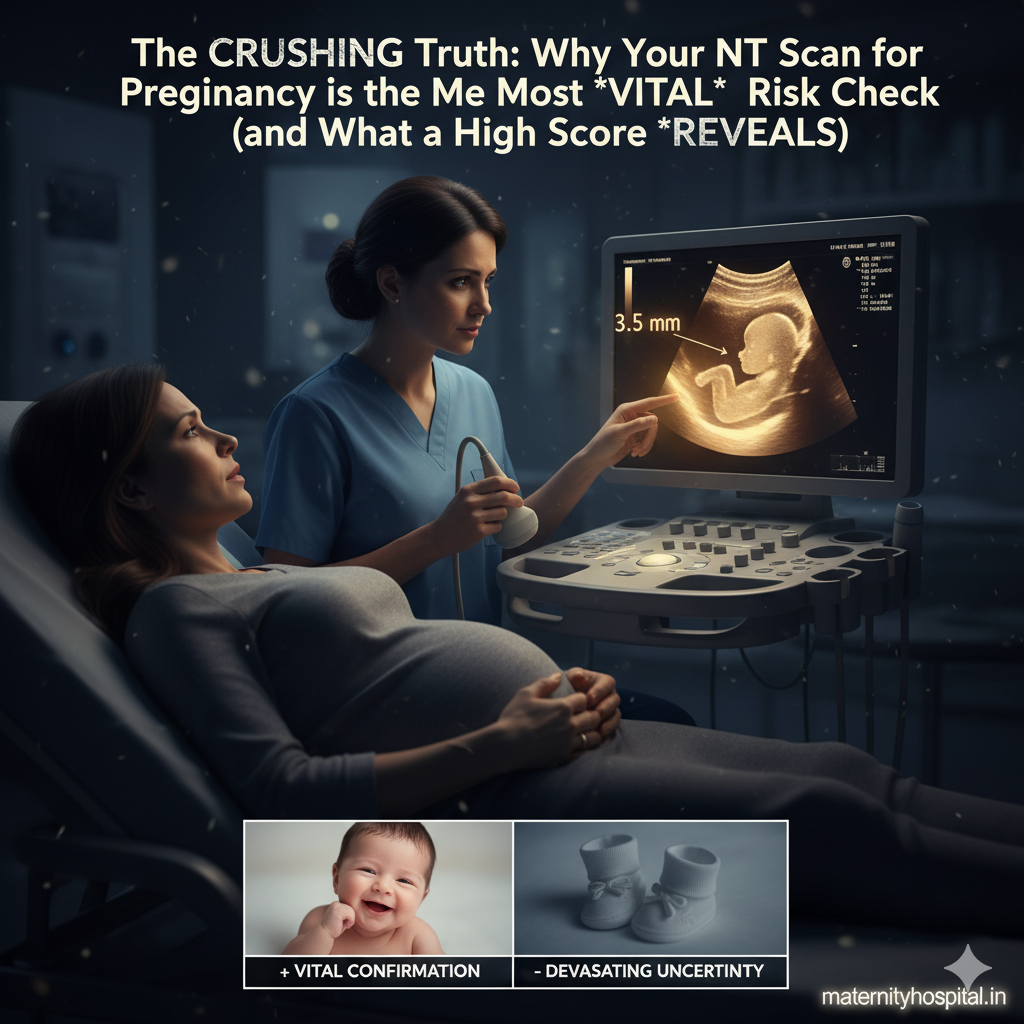
The CRUSHING Truth: Why Your NT Scan for Pregnancy is the Most VITAL Risk Check
The journey through the first trimester of pregnancy is a dynamic period marked by rapid fetal development and pivotal screening opportunities. Among the most important of these is the NT Scan for pregnancy—a non-invasive ultrasound that offers the earliest assessment of your baby’s chromosomal health and developmental milestones. It is a moment of both excitement and nervous anticipation, providing parents and clinicians with crucial risk information that shapes the remainder of prenatal care.
This exhaustive guide is designed to serve as your definitive resource on the ultrasound NT scan, delving into its scientific basis, the detailed procedure, interpreting the NT scan normal range, and understanding the comprehensive screening protocols. By the end, you’ll have a clear understanding of the NT scan full form, the clinical significance of the NB NT Scan, and the necessary steps to take, regardless of your NT scan report.
Decoding the NT Scan –Full Form, Science, and Timing
The Nuchal Translucency Scan is often the first specialized examination expectant parents encounter, and its purpose is highly specific and time-sensitive.
1. What is the NT Scan Full Form?
The acronym NT Scan full form stands for Nuchal Translucency Scan.
- Nuchal: Refers to the neck or the nape of the neck.
- Translucency: Refers to the clear or transparent appearance of the fluid-filled space being measured.
This measurement is a marker, meaning it’s an observable physical trait associated with an increased risk for underlying conditions. It is not a diagnosis.
2. The Science Behind the Measurement
The nuchal translucency is the pocket of fluid that naturally accumulates at the back of a developing baby’s neck during the late first trimester. This fluid accumulation reflects the temporary phase of the developing lymphatic and circulatory systems.
In all fetuses, this fluid is transient. However, in cases of certain chromosomal abnormalities (like Trisomy 21) or major cardiac defects, the baby’s early heart function and lymphatic drainage system are often compromised or delayed. This poor drainage leads to a temporary, but significant, excessive buildup of fluid, resulting in a thicker NT measurement.
- Chromosomal Link: Approximately $75\%$ of fetuses with Down syndrome will have an increased NT measurement (above $3.0$ mm).
- Cardiac Link: Even in fetuses with normal chromosomes, a very thick NT measurement is strongly associated with a higher risk of major structural birth defects, particularly complex congenital heart problems.
3. The Strict Time Window for the Ultrasound NT Scan
The timing of the ultrasound NT scan is arguably the most critical factor for its accuracy. The biological conditions that make the measurement possible—the natural accumulation of fluid—exist for only a short period.
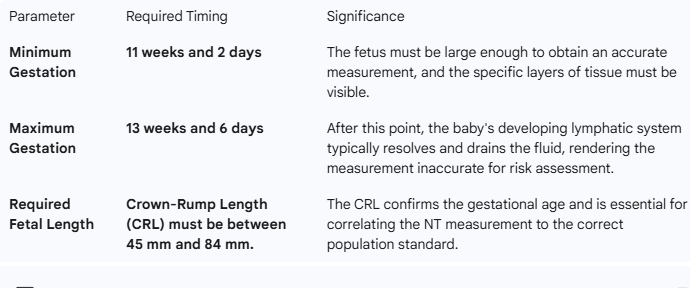
If the scan is performed outside this window, the results are considered invalid for risk calculation.
The Complete Screening Protocol –NB NT Scan and Blood Work
Rarely is the ultrasound NT scan performed in isolation. To maximize screening accuracy, it is standardized as part of the Combined First Trimester Screening, integrating maternal blood markers and specific anatomical checks, often referred to as the NB NT Scan.
1. The Importance of the NB NT Scan
The NB NT Scan specifically refers to the check for the fetal Nasal Bone (NB) during the nuchal translucency ultrasound.
- Nasal Bone and Risk: In a normally developing fetus, the nasal bone is visible during the NT scan window. Its presence provides strong evidence against major chromosomal abnormalities.
- Absent/Hypoplastic Nasal Bone: Studies show that the nasal bone is absent in $60-70\%$ of fetuses with Down syndrome, compared to less than $1\%$ of chromosomally normal fetuses. Therefore, the combination of a high NT measurement and an absent nasal bone significantly escalates the risk assessment. The sonographer must document the presence or absence of the nasal bone as part of the complete screening protocol.
2. The Role of Maternal Serum Screening
The blood test provides key biochemical markers that complement the ultrasound data. These markers are produced by the placenta and fetus and their levels are altered when a chromosomal condition is present.
- PAPP-A (Pregnancy-Associated Plasma Protein-A): Levels are typically low in pregnancies affected by Down syndrome and other trisomies.
- Free $\beta$-hCG (Human Chorionic Gonadotropin): Levels are often significantly elevated in pregnancies affected by Down syndrome.
The screening software uses a sophisticated algorithm that combines the mother’s age, the NT measurement, the presence of the nasal bone, and the precise levels of PAPP-A and free $\beta$-hCG to produce the most accurate individualized risk ratio.
3. Anatomical Screening in the First Trimester
While the focus is on the NT and NB, the ultrasound NT scan also provides an opportunity for the sonographer to perform an early anatomical survey:
- Fetal Heart Rate: Provides reassurance of viability.
- Umbilical Cord: Confirming the number of vessels (usually three: two arteries and one vein).
- Early Brain Structure: Visualizing the skull and rudimentary brain structures.
- Major Limbs: Brief visualization of the arms and legs.
Interpreting the NT ScanReport and Normal Range
Receiving the NT scan report can be nerve-wracking. It is essential to remember the report provides a risk ratio, not a diagnosis.
1. The NT Scan Normal Range
The specific NT measurement is normalized for the Crown-Rump Length (CRL). However, the general threshold for concern remains consistent:
- NT Scan Normal Range: Generally considered to be under 3.0 millimeters (mm), but ideal measurements are often closer to the median, around $1.0$ mm to $1.5$ mm.

2. Understanding the Final Risk Ratio
The ultimate result on your NT scan report is presented as a fraction (e.g., 1 in 100 or 1 in 10,000).
- Example 1: Risk of 1 in 5,000
- This means that out of 5,000 babies with your exact screening profile (age, NT, hormones), only 1 is expected to have the condition (e.g., Down syndrome). This is considered low risk.
- Example 2: Risk of 1 in 100
- This means that out of 100 babies with your exact profile, 1 is expected to have the condition, and 99 are not. This is considered high risk, even though the probability of a healthy baby (99%) is still much higher.
The Cut-Off: Most clinics define a high-risk screen as a ratio of 1 in 250 or less (e.g., 1 in 150). Any ratio above this cut-off is considered low-risk.
3. The Accuracy of the NT Scan for Pregnancy
The Combined First Trimester Screening (NT + blood work + NB) is a powerful screening tool:
- Detection Rate: It can identify about $85-90\%$ of all fetuses with Down syndrome.
- False Positive Rate: The false positive rate—the number of normal fetuses flagged as high-risk—is generally kept low, around $5\%$.
The Emotional and Financial Aspects –NT Scan Price and Coping with Anxiety
The emotional component of prenatal screening is often overlooked. Understanding the practical and emotional steps can significantly reduce anxiety.
1. The Emotional Impact of the Scan
The ultrasound NT scan can be a source of significant stress, especially while awaiting the blood test results, which may take up to a week.
- Coping Strategy 1: Focus on the Diagnosis: Remind yourself that a high-risk screen is not a high-risk diagnosis. The vast majority of women who receive a high-risk ratio go on to have healthy babies.
- Coping Strategy 2: Informed Decision-Making: Use the results, whether high or low risk, as a tool for making the next informed step, not as a source of final worry.
2. Addressing the NT Scan Price
The NT scan price (and the total cost of the Combined First Trimester Screening) varies significantly based on healthcare systems and insurance.
- Cost Factors: The price typically covers the sonographer’s time, the use of specialized ultrasound equipment, the radiologist’s interpretation, and the laboratory fees for the PAPP-A and $\beta$-hCG blood tests.
- Insurance Coverage: In many regions, the NT scan for pregnancy is considered standard prenatal care and is covered by insurance. However, it is crucial to contact your insurance provider before the appointment to confirm coverage, deductibles, and co-pays.
- Private vs. Public: NT scan price is usually higher at private specialized clinics but may offer shorter wait times and immediate review by a maternal-fetal medicine specialist.
The average out-of-pocket cost for the full screening (ultrasound and blood work) in the United States, if not fully covered, can range from $200 to over $500.
3. Limitations of the Scan
The NT scan for pregnancy has limitations that must be accepted:
- It cannot detect all genetic conditions (e.g., single-gene disorders like Cystic Fibrosis).
- It cannot guarantee a healthy baby; structural defects can develop later in the pregnancy.
- Its accuracy is highly dependent on the sonographer’s expertise and the proper calibration of the equipment.
Next Steps –When the NT Scan Report Shows High Risk
If the NT scan report returns a high-risk result (e.g., 1 in 150 or lower), your provider will recommend follow-up testing. These tests move from screening (assessing risk) to diagnosis (confirming the condition).
1. The Bridge Test: Non-Invasive Prenatal Testing (NIPT)
The first step after a high-risk ultrasound NT scan is almost always NIPT.
- Procedure: A simple maternal blood draw that analyzes small fragments of the baby’s DNA (cell-free DNA or cfDNA) circulating in the mother’s bloodstream.
- Accuracy: NIPT has a detection rate of over $99\%$ for Down syndrome and other common trisomies. It is highly accurate and poses zero risk of miscarriage.
- Limitation: While highly accurate, NIPT is still a screening test; it is not considered definitive, though its accuracy is near-diagnostic.
2. Diagnostic Testing: The Final Answer
If NIPT also returns a high-risk result, or if the NT measurement is extremely high (e.g., over $4.0$ mm), your doctor may recommend an invasive diagnostic procedure.
- Chorionic Villus Sampling (CVS): Performed between 10 and 13 weeks. Takes a small sample of placental tissue for chromosomal analysis.
- Amniocentesis: Performed between 15 and 20 weeks. Takes a small sample of amniotic fluid for chromosomal analysis.
Both tests carry a small, but real, risk of miscarriage (approximately $1$ in $500$) but provide a definitive karyotype (a map of the baby’s chromosomes).
3. The Path Forward
The purpose of all this early information, starting with the NT scan for pregnancy, is to empower parents. A confirmed diagnosis allows parents to:
- Prepare Medically: Ensure the baby is born in a hospital with specialized pediatric care (e.g., a pediatric cardiac surgeon ready for a major heart defect).
- Seek Support: Connect with support groups, genetic counselors, and specialists to understand the condition fully.
- Make Personal Decisions: Time and information are critical for personal, ethical, and planning decisions.
The NT scan for pregnancy is a vital scientific tool that starts the process of comprehensive prenatal care, offering the gift of knowledge and preparation.
Frequently Asked QuestionsFAQ
Q1. What is the NT scan full form?
The NT scan full form is Nuchal Translucency Scan.
Q2. Is a $2.8$ mm NT measurement considered high risk?
While $2.8$ mm is still below the common $3.0$ mm cutoff for the NT scan normal range, it is on the higher end of normal. The risk is determined by combining this measurement with your maternal blood work (PAPP-A and $\beta$-hCG) and age. On its own, $2.8$ mm is a borderline measurement that warrants a closer look at the entire NT scan report ratio.
Q3. Why is it called the NB NT Scan?
The term NB NT Scan refers to the requirement to check for the Nasal Bone (NB) along with the Nuchal Translucency measurement. An absent or small nasal bone significantly increases the risk profile, even if the NT measurement is low.
Q4. Is the ultrasound NT scan painful?
No, the ultrasound NT scan is a standard abdominal ultrasound, making it entirely non-invasive and painless. It is similar to a routine dating scan.
Q5. What is the typical NT scan price?
The NT scan price varies widely, but for the full screening (ultrasound plus blood work), the out-of-pocket cost typically ranges from $150 to $500 in the absence of full insurance coverage. Always verify with your insurance provider beforehand.
Q6. If my NT scan report is low risk, do I still need more tests?
Yes. A low-risk NT scan means your risk for Down syndrome is low. You will still proceed with other routine screenings, such as the Level II Anatomy Scan (around 20 weeks) to check for structural development.
Dofollow Official External Links (Further Reading)
For official, authoritative information on the NT scan for pregnancy and first-trimester screening, please consult these resources:
- Centers for Disease Control and Prevention (CDC) – First Trimester Screening: https://www.cdc.gov/ncbddd/birthdefects/pregnancy.html
- American College of Obstetricians and Gynecologists (ACOG) – Prenatal Genetic Diagnostic Tests: https://www.acog.org/patient-resources/faqs/pregnancy/prenatal-genetic-screening-and-diagnostic-tests
- Mayo Clinic – Genetic Testing During Pregnancy: https://www.mayoclinic.org/healthy-lifestyle/pregnancy-week-by-week/in-depth/genetic-testing/art-20047432
Medical and Legal Disclaimer
This article is for informational purposes only and is not a substitute for professional medical advice, diagnosis, or treatment. Always consult your physician regarding the NT Scan for pregnancy results and decisions.
